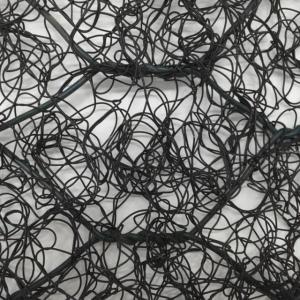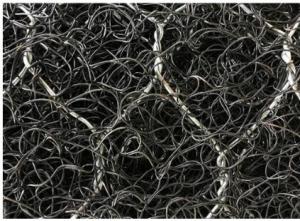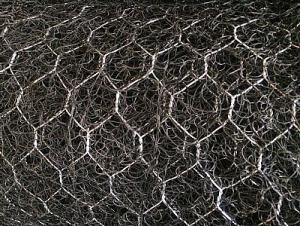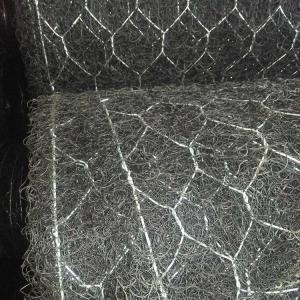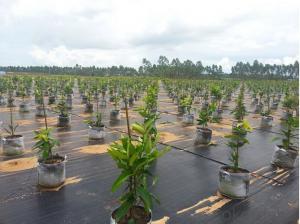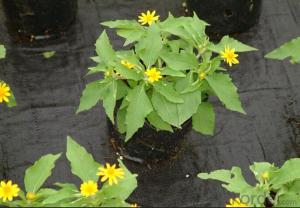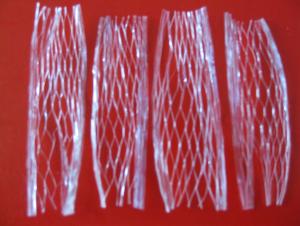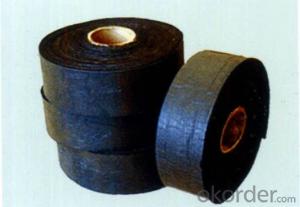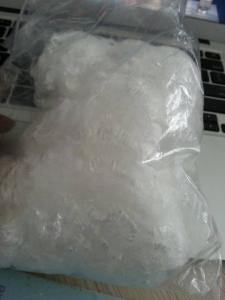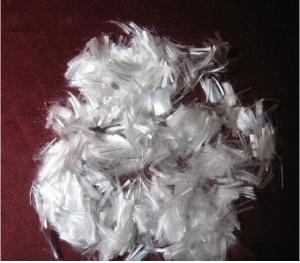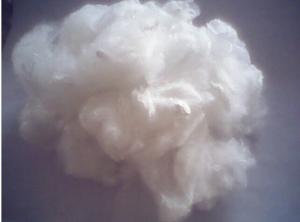Reinforced Steel Mat/Erosion Control Mat for Slope Reinforcement Project
- Loading Port:
- Qingdao
- Payment Terms:
- TT or LC
- Min Order Qty:
- 1000 m²
- Supply Capability:
- 500000 m²/month
OKorder Service Pledge
OKorder Financial Service
You Might Also Like
3D Reinforced Erosion Control Mat/Steel Mat Introduction
Erosion control is an integrated composite of high-tensile steel mesh and a three dimensional mat of PP monofilaments.
The combination of these two unique meshes results in a geomat which is very simple and fast to install and provides an optimal basis for the re-vegetation
of bare areas.
This synthetic material combines the perfect corrosion resistance of geomats, it has higher mechanical tension force and stronger erosion resistance.
3D Reinforced Erosion Control Mat/Steel Mat Introduction Property
1) Self permeability, the gap of erosion control is helpful to discharge of water from the structure, meanwhile, relevant cost of drainage equipment for traditional structure is saved.
2) Stereo vegetability, the stereoscopic properties can greatly enhance the growth space of plants, natural exchange of water and soil is realized. Increasing greening area, and realizing flexible slope protection.
3) Long service life, its raw material is 10% Aluminum-Zinc Alloy Steel Wire, with stronger corrosion resistance, it can guarantee its service life. Stable performance, ultraviolet resistance, acid and alkali corrosion resistance, abrasion resistance.
4) Easy to installation, simple operation, less disturbance by climate and suitable for mechanized operation can ensure construction quality and speed up construction progress.
3D Reinforced Erosion Control Mat/Steel Mat Introduction Data Sheet
Item | Diameter | Mesh Size | Tensile Strength(MD) | Tensile Strength(CD) | Edge wire tensile strength | The intensity of coating |
Steel Mesh | 2.7mm | 80*100mm | 26KN/M | 51KN/M | 20KN/M | 87KN/M |
Item | Melting Point | Void Index | Polymer | Weight | Anit-UV |
Geomat | 150 | ≥90% | Polypropylene | 400g/m2 | Stable |
3D Reinforced Erosion Control Mat/Steel Mat Introduction Application
a) Public / railway embankment, embankment, cutting, bridge abutments
b) Landslides, mudslides and control engineering
c) Inland port, coastal protection, urban construction of retaining structures, river training works


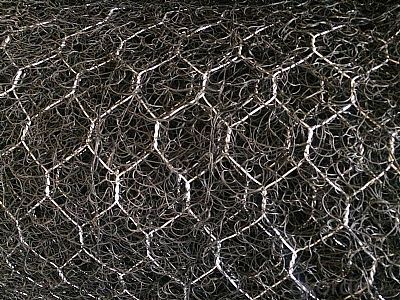
- Q:How are geocells used for load support in utility trenches?
- Geocells are used for load support in utility trenches by acting as a reinforcement system. They are installed horizontally within the trench and filled with compacted soil or aggregate material. This creates a strong and stable foundation that helps distribute the load from the utilities and prevent settlement or deformation of the trench.
- Q:Are there any earthwork products specifically designed for airport construction?
- Yes, there are earthwork products specifically designed for airport construction. These products include geotextiles, geogrids, and geomembranes that are used for soil stabilization, erosion control, and drainage management during airport construction. These materials play a crucial role in ensuring the stability and longevity of airport infrastructure.
- Q:Can earthwork products be used in green infrastructure projects?
- Yes, earthwork products can be used in green infrastructure projects. These products, such as natural soils, compost, and mulch, can help improve soil quality, promote water conservation, and support the growth of vegetation in green infrastructure projects. Additionally, earthwork products can be used for erosion control, stormwater management, and enhancing biodiversity in these projects.
- Q:What are the fire safety properties of earthwork products?
- Earthwork products, such as soil and clay, do not possess inherent fire safety properties. In fact, these materials can be highly combustible and may contribute to the spread and intensity of fires. Adequate fire prevention measures, such as maintaining clearances, implementing fire breaks, and employing fire-resistant coatings, are necessary to mitigate the fire risks associated with earthwork products.
- Q:How do erosion control blankets help in establishing vegetation?
- Erosion control blankets help in establishing vegetation by providing a protective layer that prevents soil erosion and promotes seed germination. The blankets reduce the impact of rainfall and wind, allowing seeds to stay in place and providing a stable environment for root development. Additionally, erosion control blankets help retain moisture and provide a microclimate for seedlings to grow, ultimately leading to the establishment and growth of vegetation.
- Q:Are earthwork products environmentally friendly?
- Earthwork products can be considered environmentally friendly because they are made from natural materials such as soil, clay, and rocks. These products have minimal impact on the environment during production and usage, as they do not release harmful chemicals or pollutants. Additionally, earthwork products are often biodegradable and can be reused or recycled, further reducing their environmental impact.
- Q:What are the cost implications of using geosynthetics in earthwork projects?
- The cost implications of using geosynthetics in earthwork projects can vary depending on the specific project requirements, but generally, geosynthetics can help reduce construction costs in several ways. Firstly, geosynthetics such as geotextiles and geogrids can serve as effective soil reinforcement materials, reducing the need for traditional reinforcement methods like steel or concrete, which can be more expensive. Additionally, geosynthetics can enhance the stability and performance of soil structures, allowing for the use of less expensive fill materials. They can also improve drainage and filtration, reducing the need for costly drainage systems. Overall, while there may be an initial cost associated with incorporating geosynthetics, their long-term benefits and potential cost savings make them a cost-effective choice for earthwork projects.
- Q:What are the benefits of using geogrids in road reinforcement projects?
- Geogrids offer numerous benefits in road reinforcement projects. Firstly, they enhance the stability and load-bearing capacity of the road, preventing deformation and rutting caused by heavy traffic. Secondly, geogrids improve the overall durability of the road by reducing cracking and extending its lifespan. Additionally, they provide excellent soil reinforcement, reducing the need for extensive excavation and expensive construction materials. Finally, geogrids are easy to install and require minimal maintenance, making them a cost-effective solution for road reinforcement.
- Q:Can earthwork products be used in agricultural applications?
- Yes, earthwork products such as soil, gravel, and mulch can be used in various agricultural applications. Soil can be used for cultivating crops, improving drainage, and creating raised beds. Gravel can be used for pathways and driveways, while mulch can help retain moisture, control weeds, and improve soil quality in gardens and landscapes.
- Q:What are the different methods of sediment control?
- There are several methods of sediment control, including sediment basins, silt fences, sediment traps, erosion control blankets, and sediment ponds. These methods aim to prevent sediment runoff from construction sites or other areas of soil disturbance from entering water bodies and causing pollution.
1. Manufacturer Overview |
|
|---|---|
| Location | |
| Year Established | |
| Annual Output Value | |
| Main Markets | |
| Company Certifications | |
2. Manufacturer Certificates |
|
|---|---|
| a) Certification Name | |
| Range | |
| Reference | |
| Validity Period | |
3. Manufacturer Capability |
|
|---|---|
| a)Trade Capacity | |
| Nearest Port | |
| Export Percentage | |
| No.of Employees in Trade Department | |
| Language Spoken: | |
| b)Factory Information | |
| Factory Size: | |
| No. of Production Lines | |
| Contract Manufacturing | |
| Product Price Range | |
Send your message to us
Reinforced Steel Mat/Erosion Control Mat for Slope Reinforcement Project
- Loading Port:
- Qingdao
- Payment Terms:
- TT or LC
- Min Order Qty:
- 1000 m²
- Supply Capability:
- 500000 m²/month
OKorder Service Pledge
OKorder Financial Service
Similar products
New products
Hot products
Related keywords
